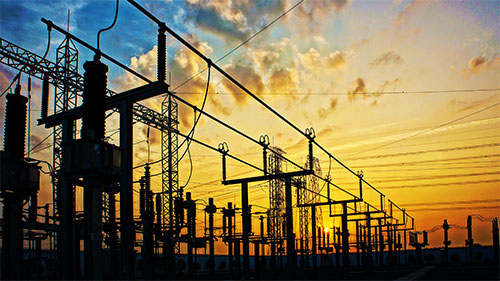 Significant financial challenges continue to confront the world’s major economies, increasing the issues they face in addressing new and evolving threats to critical national infrastructure (CNI). Persistent threats of physical and data terrorism, theft and extreme weather events, have all served to concentrate the minds of those responsible for protecting critical assets.
Significant financial challenges continue to confront the world’s major economies, increasing the issues they face in addressing new and evolving threats to critical national infrastructure (CNI). Persistent threats of physical and data terrorism, theft and extreme weather events, have all served to concentrate the minds of those responsible for protecting critical assets.
The services upon which societies rely – among them banking, energy, transportation, water supply, agriculture and telecommunications – have become targets of adversaries working in ever more sophisticated ways. The need to take action is clearer than ever, but so are the budgetary limitations facing many.
In unveiling its vision for protecting the United States until 2016, the Office of Infrastructure Protection said its focus was to “apply and promote innovative and leading-edge programs and activities that cost-effectively manage and enhance the resilience of the nation’s critical infrastructure.” The US is not alone in its bid to blend innovation with cost-efficiency; it is a global mission.
Fortunately, evolving security technologies and enhanced surveillance integration capabilities mean that protecting people, property and data within a strict budget is entirely feasible.
Protect the Whole by Addressing the Parts
Of primary concern, when considering the holistic notion of protecting critical national infrastructure is the necessity for so many disparate entities – many of them privately owned, others aligned to the public sector - to present a united front against potential threats including:
- Terrorism: The primary concern for national security agencies is the prevention and detection of terrorist attacks. The protection of data centers in particular is of increasing concern.
- Environmental: Natural disasters linked to concerns about climate change are placing new emphasis on measures designed to protect citizens, national infrastructure and economies.
- Theft: Incidents of metal theft, partly in response to rising commodity prices, illustrate the extent to which critical national infrastructure is at risk from theft, with transport and energy supply infrastructure bearing the brunt of acts of theft and vandalism.
 But, how can this ‘united front’ ever be the case while the individual organizations that make up a country’s critical national infrastructure remain disjointed in their own approach to security?
But, how can this ‘united front’ ever be the case while the individual organizations that make up a country’s critical national infrastructure remain disjointed in their own approach to security?
Perimeter security, intruder detection systems, access control, ANPR, emergency incident alarms and general site surveillance – they are all used by organizations critical to our daily lives, but they are traditionally disparate elements that have been specified and implemented in isolation, and which are managed independently of each other. The net result is financial and security inefficiency.
Monitoring disparate systems independently takes time. It also limits potential information capture because information received is siloed and therefore not presented in the broader context of other events. A more integrated approach is required and now, it’s an approach more critical national infrastructure organizations are taking.
Greater Integration Means Increased Potential
Individual organizations operating within the CNI sector want to be cost-effective as well as take vital steps forward towards a more unified approach. For these organizations, connecting their own disparate security elements via an integrated surveillance monitoring and control platform is proving an increasingly popular option.
Open protocol. Today’s open protocol integrated security solutions mean that CCTV, intruder alarms, fire detection, access control, critical asset tracking and building management systems can not only communicate with each other, but can also be monitored and controlled on a centralized command and control platform, from one location. Integration of this level doesn’t just help deliver coherent and comprehensive security monitoring, it also facilitates effective and appropriate security action.
Breaches or critical impact scenarios. As well as detecting and alerting operators to threats, accompanied by live visual/audio feed – today’s high end surveillance systems can also be programmed to ‘look for’ complex breach or critical impact scenarios (data sets which individually may not mean anything but together signify threat) and respond accordingly. For example, a data center may have scheduled maintenance work, or a power distribution hub may be due to move a series of cable drums on site – nothing unusual in these facts in isolation. But, pair either of these scenarios with unusual/unauthorised staff ID movements or data downloads out of usual sequence, and the situation changes. An integrated system can be set to detect such data combinations, alert CCTV operators by streaming live footage from cameras in the ‘breach zones’ and launch a series of reactive protocols that guide operators though appropriate ‘next steps’ such as immediate area/perimeter lockdown or ID card cancellation. This doesn’t just guarantee response - it also guarantees response consistency, which for multi-site estates can be invaluable from both an efficiency and safety perspective.
Local emergency responders. Similarly, a system can be programmed to immediately alert local emergency responders should certain data sets be captured, ensuring that the right level of on-site assistance – say in the case of a protestor attack or a fire – is in place as quickly as possible.
Offsite responders. Video, audio, PIR activations and other alarm inputs, from any number of locations, can be easily streamed directly to offsite operators, ensuring any incident triggers appropriate visual and, if needed, audio data that enables immediate reaction to potential or actual threat.
These benefits don’t just apply to onsite control. Crucially for CNI organizations, which often have responsibility for managing multi-site estates spanning broad geographic areas – frequently incorporating unmanned assets, the integration capabilities outlined and benefits afforded by a ‘one platform’ approach to security monitoring and control make remote asset protection a practical solution.
A Challenge to be Met
Globally, the protection of critical national infrastructure has never been more important or more challenging. While the specifics may vary from nation to nation, the themes remain constant. It comes down to protecting the people, property and data that make our daily lives possible, all within the boundaries and constraints set by the current economic climate. And that means it’s about greater efficiency.
Unifying security operations through a single platform is a trend that is set to continue. The approach saves time, resources and ultimately makes levels of threat detection possible that simply weren’t achievable previously. CNI organizations are recognizing this fact and taking advantage of the latest trends in integrated surveillance monitoring and control to achieve security goals and streamline operations.